- Home
- Graham Hancock
Magicians of the Gods: The Forgotten Wisdom of Earth's Lost Civilization Page 8
Magicians of the Gods: The Forgotten Wisdom of Earth's Lost Civilization Read online
Page 8
“About three and a half miles … That was where it had got to when the flood stopped. God only knows what it would have ended up looking like, or where it would have been today, if the flood had continued even for another couple of weeks…”
“I don’t understand.”
“The indications are that the flood only lasted a matter of weeks, and throughout that time the falls were constantly migrating northward…”
“Migrating?”
“Yes, all falls migrate, at different rates depending on the amount and force of the water flowing over them. They pluck at the bedrock and constantly eat it away upstream. Take Niagara, for example. It’s retreated seven miles in the last twelve thousand years,7 but that’s puny compared with what happened here, where the retreat was about thirty miles—the whole length of Lower Grand Coulee—in less than a month.”
“So the rate of erosion was incredibly fast?”
“Yes! Thousands of times faster than Niagara, because of the incredible amount and force of the water here. Dry Falls was the greatest waterfall that’s ever existed on planet earth.”
“And all that water’s supposed to have come out of Glacial Lake Missoula?”
“Well,” says Randall. His beard juts out stubbornly. “That’s the theory.”
Erratic hunting
Randall doesn’t buy the gradualist theory that multiple emptyings of Lake Missoula through multiple breakings and remakings and breaking again of its ice dam can account for the evidence on the ground. He doesn’t dispute that the glacial lake existed, or that there were outburst floods from it, but he’s convinced it was never anywhere near big enough to account for all the cataclysmic features of the Channeled Scablands. Like J Harlen Bretz in the 1920s, he believes that one sudden, short-lived, totally exceptional flood of truly immense proportions was the real culprit.
On another day Randall takes me “erratic hunting” to explain why. We pull off Interstate 97 onto the Waterville Plateau and drive across rugged, rolling country where occasional green and yellow fields intermingle with wilder moorland too poor ever to be farmed. Pretty soon we start seeing huge clusters, flocks, packs, crowds of giant boulders all of ominous black basalt, all alien to this landscape and I know enough, now, to recognize them for what they are. As ice caps move and spread they snatch up, enchain and transport huge rocks that then remain locked within them until the ice melts and drops its load. What happened here—the place is actually called “Boulder Park” and is recognized as a National Natural Landmark—was a different aspect of the same process. “When the Ice Age flood came pouring down over the Waterville Plateau,” Randall explains:
it was carrying thousands of icebergs with it—icebergs as big as oil-tankers with house-sized boulders frozen inside them. When they bumped up against hillsides [he points to a distant ridge with ranks of colossal boulders strewn across it] the icebergs grounded and stuck there. Eventually, after the flood had subsided, they melted out leaving the boulders where they sit to this day strewn all over the top of the plateau beyond the ridge and carpeting the hillside for twenty miles going north.
“But that ridge must be what, eight hundred, maybe nine hundred feet above us,” I observe.
“Exactly! Which tells us that the water was at least that deep here. Or rather, not simply water but a sludge slurry, and as the flood starts to subside the slurry just gets thicker and thicker with sediment until it finally leaves the whole valley floor covered in sediment hundreds of feet thick and filled with embedded boulders. I mean, again, we are looking at the ruins and wreckage of a former world.”
We get back onto Interstate 97 heading south along the west bank of the majestic Columbia river and divert west on Alternate 97 toward Lake Chelan. Fifty miles long and never more than a mile and a half wide, lying in the bottom of a forested, steep-sided valley overshadowed by lofty mountains, Chelan has the look and feel of a grand Scottish loch. It is appropriate, therefore, that it also has traditions of a lake monster—a dragon, according to Native American legends—that ate up all the game, leaving the people starving. The Great Spirit was angered and decided to intervene. He descended from the sky:
and struck the earth with his huge stone knife. All the world shook from his blow. A great cloud appeared over the plain. When the cloud went away, people saw that the land had changed. Huge mountain peaks rose on all sides of them. Among the mountains were canyons. Extending from the northwest to the southeast for a two days’ journey was a very deep canyon. The Great Spirit threw the monster’s body into this deep and long gorge. Then he poured much water into it and so formed the lake. Long afterward, Indians called it Chelan.8
Figure 17
Chelan means “Deep Water” in the local Salish Indian language, and Lake Chelan is indeed 1,468 feet (453 meters) deep, making it the third deepest lake in the US and the twenty-sixth deepest in the world.9 Some aspects of the myth, I note in passing, are evocative of earth changes at the end of the Ice Age. Mountains that had been hidden beneath the ice cap, and that therefore no one had seen before, did indeed appear when the ice melted. Canyons were indeed carved through the whole of the Columbia Plateau by the rushing waters of Bretz’s flood. And as we will see in the next chapter there may also be more than meets the eye to the huge stone knife from the sky striking the ground so hard that “the world shook,” and to that ominous cloud that appeared over the land. Likewise, the presence of an immense iceberg-rafted erratic above the town of Manson on Chelan’s north shore10 suggests that the notion of “much water” being poured into the lake, in other words of a flood passing through here, may also be rooted in memories of real events.
After passing more erratics scattered around the southern end of Lake Chelan,11 we head back to Interstate 97, cross to the east bank of the Columbia River at Beebe Bridge, then go north to the mouth of McNeil Canyon where yet more boulder-strewn moorland awaits us. Numbering in their thousands, the erratics here are known locally as “haystack boulders” because of their distinctive appearance, but the rounded profile they show from a distance gives way, close up, to a mass of jagged and splintered black basalt. Many of them are thought to weigh more than 10,000 tons, and as Randall and I examine them, I’m daunted by their great height and mass, and amazed at the power and energy of the floodwaters that brought them here.
We get back on Interstate 97 again and drive the forty miles south to the confluence of the Wenatchee and Columbia Rivers near the eastern foothills of the Cascade Mountains. Here Randall has a last giant erratic to show me, this one weighing, he estimates, 18,000 tons. It stands high up on the side of a long, wide valley, looming over a modern housing development, hundreds of feet above the confluence of the rivers and the town of Wenatchee.
We scramble to the top of the erratic so we can look down on the rivers glistening far below. “Obviously,” Randall explains, “the flood waters must have filled the whole valley from bottom to top so when the iceberg floated in it stranded right here then melted away and left this sitting on the ridge.”
“And the flood itself? Where did it go next?”
“The water coming down through here met the water coming out of Grand Coulee and Moses Coulee and many other scabland channels, and then it all together flowed down to Pasco Basin and Wallula Gap…”
Black rain
The next day finds us on top of a high bluff overlooking Wallula Gap. “So the water here rose up to roughly 1,200 feet above sea level,” Randall says.12 He consults his GPS, “and where we’re standing now is 1,150 feet above sea level, so the flood would have been fifty feet over our heads.”
“And the water came from which direction?”
Randall points north: “It came roaring out of the Channeled Scablands. A mass of different flows converged here, and then passed on through, down the Columbia. So this was the gathering of the waters. Here’s where all of these great flood streams came together.”
I look out over the scene below, a drama of earth, and sky … and water.
The sky is gray, thunderous and filled with rain as it has been throughout our trip. The earth element begins with a very thick, powdery layer of soft dun-colored dust called loess that lies everywhere under our feet on the top of the bluff. But then the bluff plunges away in a steep tumbling fall down to the Columbia—which forms the water element—below. Across the stream, more than a mile wide here, the terrain rises again toward the east, not so sheer as on the west side where we’re standing, still covered by that same thick layer of powdery loess and marked in addition by distinctive scabland topography, with cliffs plunging into valleys and a series of outcrops carved by the ancient floods—most prominently the two isolated basalt pillars known as the “Twin Sisters” that stand directly opposite us.
“Those Twin Sisters,” Randall explains, “are a remnant … Look there, immediately to the left of the Sisters you can see a shelf. That would have all been continuous … I believe that was the pre-flood valley floor … When the flood hit, it ripped through here and lowered the valley floor by about two hundred feet, based on the present depth of the river and the height of the Twin Sisters. Had the flood continued for a week longer the Twins would have been washed away as well … They would have been about eight hundred feet underwater. And really, if you look across—there, way above the level of the Sisters—you’ll see that uppermost outcrop of basalt, roughly at our level. That would have been the high water mark and everything below that was underwater at the peak of the flood—so what you’re seeing over there in the scabland around the Sisters is that spectacular erosion of the basalt by the water, just ripping through here at sixty or seventy miles an hour because the back pressure would have been so great.”
“Fearsome and ferocious flows,” I hazard.
“Oh, my God, yes! Like an inland sea, except that it’s moving…”
“And it’s turbulent and it’s angry…”
“And the turbulence is increasing massively as it comes up to this constriction at Wallula Gap. But when you look at the capacity of this valley, it would have had to have been a hell of a lot of water pouring in from the north to backflood to the extent that it did. The valley out of Lake Missoula is no bigger than this one and it’s two hundred miles north of here. So how could that water have spilled out of Lake Missoula, traveled two hundred miles to here, and not have attenuated to the degree that it would just pass through without ponding above the gap? But it did pond, massively and deeply as we can tell from the high water mark. And that, to me, is just incontrovertible evidence that there was more water pouring into this than could ever have been pouring out of Lake Missoula.”
“So,” I summarize, “we have water twelve hundred feet deep which flows through here turbulently…”
“Very turbulently…”
“And then how long does it stay that deep?”
“The estimates are that it’s probably one to three weeks, and then it begins to ebb away. Because … they call this hydraulic ponding. This was effectively a hydraulic dam in the sense that the water itself, forced through a constriction like Wallula Gap, becomes a kind of dam—and especially so since the water here was filled with massive icebergs. All throughout the flood pathway are erratics that were carried by icebergs—all the way down into Eugene, Oregon … You gotta picture it. You’ve got a moving sea choked with thousands of icebergs…”
I’m getting the picture all right. “Wild scene,” I say.
“Wild scene,” Randall agrees. “All of these icebergs are jostling up against each other and getting jammed in the gap. And what that’s going to do is cause the water level to rise still further until the pressure increases enough to push the whole mass down through the gap—then the water level drops until the next jam occurs. So I think what we’re seeing is a pulsating hydrograph that every time it rises, it backfloods further up the valley, and then the water level drops and then it rises again.”
The next point I put to Randall, closely connected to the vision of the flooded hellworld that he’s just conjured up, relates to the central enigma I wish to explore in the rest of this section, but which I have not yet placed before the reader. It concerns the growing body of evidence that 12,800 years ago a giant comet traveling on an orbit that took it through the inner solar system broke up into multiple fragments, and that many of these fragments, some more than a mile (2.4 kilometers) in diameter, hit the earth. It is believed that North America was the epicenter of the resulting cataclysm with several of the largest impacts on the North American ice cap causing floods and tidal waves and throwing a vast cloud of dust into the upper atmosphere that enshrouded the earth, preventing the sun’s rays from reaching the surface and thus initiating the sudden, mysterious global deep freeze that geologists call the Younger Dryas. We will go into the evidence for all this, and how it relates to “Bretz’s flood”—which might not, after all, have emerged from Lake Missoula—in the chapters that follow. But for now, please bear with me as I play out the rest of my conversation with Randall at Wallula Gap.
“And there’s been a comet impact,” I say, “so we’re expecting that the sky is going to be bad too…”
“Oh, it’s got to be…”
“Dark…” I think about it, then add: “Lots of stuff wafted up there by the impact.”
“Stuff!” Randall kicks a furrow in the soft dust with the toe of his hiking boot. “That’s what I think this six-foot layer of loess is. All over the flood areas you see this six, seven, eight-foot thick layer of loess—and clearly it rained down out of the atmosphere.”
“Like the legends of Kon-Tiki Viracocha.” I name the South American civilizing hero, white-skinned and bearded like Quetzalcoatl and the Apkallu sages described in Chapter One, who was said to have come to the Andes during a terrifying period, thousands of years in the past, “when the earth had been inundated by a great flood and plunged into darkness by the disappearance of the sun.”13 (Exactly like Quetzalcoatl in Mexico, and the Apkallu sages in Mesopotamia, Viracocha’s civilizing mission in the Andes had been to bring laws and a moral code to the survivors of the disaster, and to teach them the skills of agriculture, architecture and engineering.)
“Ah yes,” Randall muses. “The legends of Viracocha. Wasn’t there something there about a black rain?”
“There was, absolutely. A thick, black rain. It’s pretty much universal to the flood myths I’ve studied…”
Randall kicks the loess again. “This stuff is puzzling you know. It has a kind of vertical structure. Most theories suggest that it’s windborne, but the vertical structure is inconsistent with that. I’m developing an idea that it’s actually both water and windborne, because I think that the final rainout after the comet hit the ice cap was essentially a rainout of mud. There would have been a huge injection of superheated water into the stratosphere—filthy, particle-laden water—which would have then spread rather like the debris cloud of a nuclear explosion and the end result would undoubtedly have been a very intense, and prolonged rainout.”
But did a comet hit the earth 12,800 years ago?
As we’ll see in the next chapter, the evidence assembled by an international team of highly credentialed scientists is taking the comfortable world of gradualist, uniformitarian geology by storm.
Chapter 5
Nanodiamonds Are Forever
Continuing our journey east through the northern states of the US, after leaving Washington and driving across the Idaho panhandle, Randall made a point of showing me some of the spectacular features of Camas Prairie in western Montana. There, what look to the unpracticed eye like a series of colossal dunes march in serried ranks across the flat yellow floor of an elliptical basin, twelve miles long and ten miles wide, in the midst of the Rocky Mountains. But the “dunes,” it turns out, are not dunes at all. Instead they are giant current ripples, some more than fifty feet high and three hundred feet long, formed at the end of the Ice Age when Camas Prairie was part of the bed of Glacial Lake Missoula and lay under about 1,400 feet of water.
1 Geologists are agreed that the ripples were shaped by powerful currents set in motion when the lake drained catastrophically.2
“And I don’t dispute it,” Randall says, as we stand on a vantage point above the prairie. A largely deserted highway runs through the floor of the ancient basin, but now as a vehicle appears, providing scale, I see that it’s dwarfed to matchbox size by the ripples.
Figure 18
“So,” I ask, “you have nothing against the existence of Lake Missoula as such? Or the notion that it did drain catastrophically?”
“No, nothing at all. I have no doubt there were dozens of jökulhlaups out of Lake Missoula. Some were even pretty big. My point, though, is that none of them were of sufficient size to cause the spectacular flood damage that we’ve seen in the Channeled Scablands. That was done by an event orders of magnitude bigger than anything Lake Missoula could provide. So yes, the lake was dammed by ice in the Clark Fork valley, just as the gradualists maintain, and yes, that ice dam did break frequently over a period of a few thousand years, say from 15,000 years ago down to about 13,000 years ago. But the amount of water released in these periodic floods was minuscule, just a drop in the bucket compared to the final event—in which Lake Missoula was also involved, of course, but definitely not as the main culprit.”
“And that final event had to do with the impact of our comet?” (I’ve started calling it “ours,” but it’s usually referred to in the scientific literature as the “Clovis comet” or the “Younger Dryas comet.”)
“You bet,” Randall replies. “But not just one impact. Multiple impacts. I’m guessing as many as four of the fragments—each of them maybe half a mile across, maybe bigger—hit the Cordilleran and Laurentide ice caps in a sort of scatter gun effect and caused just a massive amount of instantaneous melting. The meltwater was everywhere, in enormous quantities. Naturally some of it cascaded into Lake Missoula, filling it up suddenly and causing it to burst its ice dam, thus adding its contents to the much bigger floods that were already sweeping down from the north.”

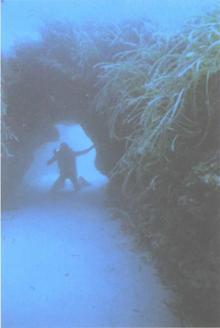 Underworld: The Mysterious Origins of Civilization
Underworld: The Mysterious Origins of Civilization The Master Game: Unmasking the Secret Rulers of the World
The Master Game: Unmasking the Secret Rulers of the World America Before
America Before Entangled
Entangled War God: Nights of the Witch
War God: Nights of the Witch War God: Return of the Plumed Serpent
War God: Return of the Plumed Serpent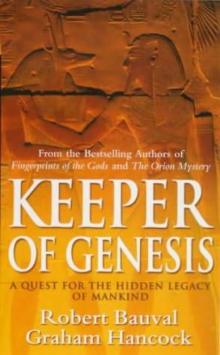 The Message of the Sphinx AKA Keeper of Genesis
The Message of the Sphinx AKA Keeper of Genesis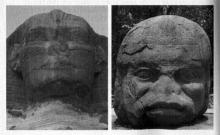 Fingerprints of the Gods
Fingerprints of the Gods The Sign and the Seal
The Sign and the Seal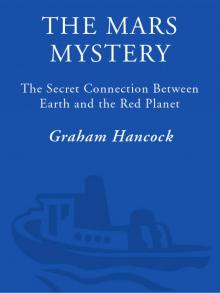 The Mars Mystery: The Secret Connection Between Earth and the Red Planet
The Mars Mystery: The Secret Connection Between Earth and the Red Planet Magicians of the Gods: The Forgotten Wisdom of Earth's Lost Civilization
Magicians of the Gods: The Forgotten Wisdom of Earth's Lost Civilization War God
War God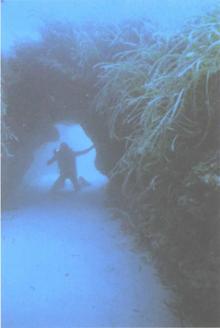 Underworld
Underworld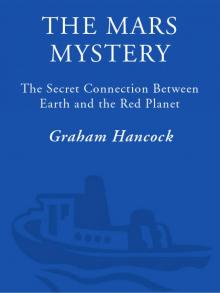 The Mars Mystery
The Mars Mystery Magicians of the Gods
Magicians of the Gods The Master Game
The Master Game